Famous Dog Paintings – Explore Famous Examples of Dog Artwork
Some of the most iconic paintings in the world are also paintings that feature some of the most intriguing and fluffy canines. Dog lover or not, these famous paintings with dogs will have you invested in the way that artists have incorporated their beloved pets into some of the most iconic paintings. In this article, we will examine the top 10 most famous dog paintings of all time, featuring paintings by artists such as Cassius Marcellus Coolidge, Edvard Munch, and Andy Warhol.
The Symbolism of Dogs in Art
It is said that dogs are man’s best friend and this proves true in the history of art. Many famous master painters have chosen to represent these dynamic creatures in a variety of ways that help broaden our understanding of the relationships between humans and dogs as well as dogs in the context of art history and symbolism. In the history of art, artists have captured their personal relationships with their best furry friends through portraiture to immortalize their favorite pets. Painting a picture of your pet will come naturally as an artist since it is close to your heart. As such, many artists have used their furry friends as subjects in some of the most endearing animal portraits in art history.

Dogs in art history have been discovered in hunting scene paintings from the Middle Ages and have since become symbols of other broader themes, including protection, love, loyalty, faithfulness, sexual connotations, and sometimes a representation of their owners’ character. Between the 16th and 17th centuries, dogs were often the subjects of famous hunting scenes and also served as symbols of social status or personal furry friends to their wealthy owners. The image of the dog was also associated with the famous Greek philosopher, Diogenes, as an ode to his “cynic” or dog-like philosophy that drew attention to the human condition of “austere existence”. The representation of dogs in art has also differed and was seen in the different depictions made by European and British dog painting artists.
Many famous Dutch, German, Belgian, and Flemish artists made paintings with dogs influenced by the style of Realism and focused on the physical appearance of the canine while British dog artworks presented a more idealized version as opposed to immediate likeness.
The Top 10 Most Famous Dog Paintings
Dogs are more than just man’s best friend and their place in art history has been both one of complex symbolism as well as cute and endearing expressions of love for one’s pet. Below, we have created a list of the top 10 most famous dog paintings of all time that will provide insight into the personal relationships experienced with man’s best friend.

A Couple of Foxhounds (1792) by George Stubbs
| Artist Name | George Stubbs (1724 – 1806) |
| Date | 1792 |
| Medium | Oil on canvas |
| Dimensions (cm) | Support: 101.6 x 127 and frame: 118 x 144 x 115 |
| Where It Is Housed | Tate Gallery, London, United Kingdom |
A Couple of Foxhounds is a popular 18th-century dog painting created by one of the most celebrated animal painters in art history, George Stubbs. Stubbs was commissioned by Reverend Thomas Vyner whose family he worked for. The reverend was a sports enthusiast and an expert on hound breeding. Stubbs’ process for painting involved the artist painting the foreground of the animal first and then the background while blending the colors over the outlines of the foreground figures to create a sophisticated and unified aesthetic. The two dogs in the painting have been set against an imaginary landscape and demonstrate Stubbs’ eye for not only a sophisticated painting style but also a “deceivingly simple composition”. The duo appears engaged in conversation, as humans would.
The type of dogs shown here was not specific and have been described as “foxhounds”, although they may have been harriers or hare-hounds.
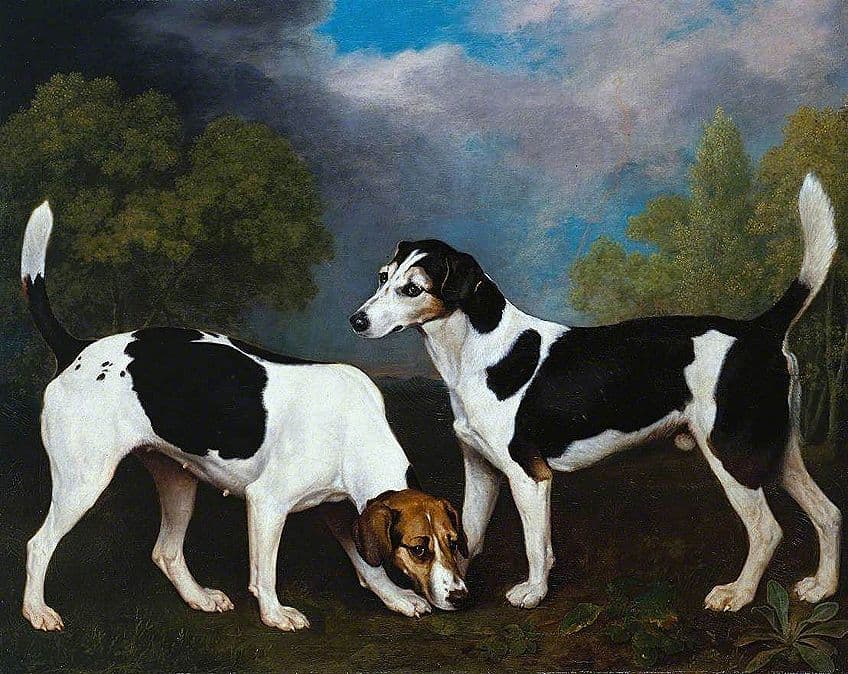
The Dog (1819 – 1823) by Francisco de Goya
| Artist Name | Francisco José de Goya y Lucientes (1746 – 1828) |
| Date | 1819 – 1823 |
| Medium | Oil mural on plaster; later transferred to a canvas |
| Dimensions (cm) | 131.5 x 79.3 |
| Where It Is Housed | Museo Nacional del Prado, Madrid, Spain |
The Dog is among the most well-known dog paintings of the 19th century created by Spanish legend, Francisco de Goya. Goya created a series of Black Paintings that were executed directly onto the plaster walls of his villa between 1819 and 1823. The Dog illustrates the head of a dog peeping upwards with an identified slope in front of its body. The image of the dog reflects distress and the slope reminds one of a wave, thus, alluding to the emotional drowning that many faces. Goya created this somber painting when he was in his 70s and managing his acute physical and mental anguish. The paintings remained in Goya’s house for five decades after he left and were never created for the public eye. The name of his home, Quinta del Sordo, translates in English to “Villa of the Deaf Man”. Goya was reportedly diagnosed with deafness after falling ill in 1792 with the villa’s previous owner also succumbing to deafness. It is believed that Goya was most likely troubled with his mortality during this time.
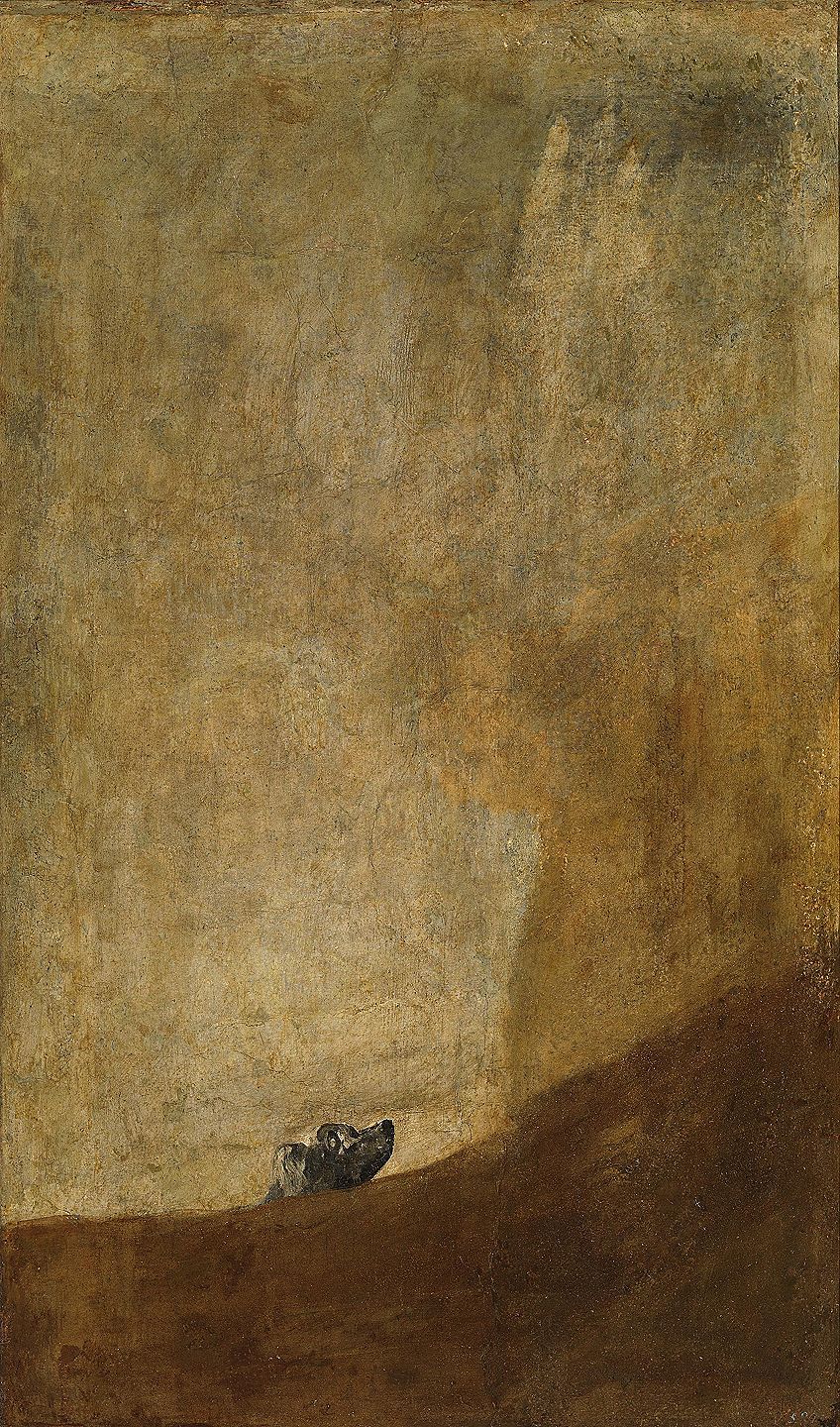
King Charles Spaniel (c. 1866) by Édouard Manet
| Artist Name | Édouard Manet |
| Date | c. 1866 |
| Medium | Oil on canvas |
| Dimensions (cm) | 66 x 57.8 x 8.9 |
| Where It Is Housed | National Gallery of Art, Washington D.C., United States |
King Charles Spaniel is a famous dog painting by “radical” French Impressionist Édouard Manet. The painting portrays a regal, well-groomed dog that gazes calmly into the distance, perhaps upon hearing its owner’s voice. The painting reflects the Impressionist style of Manet and is one of his “less controversial” artworks from the 19th century. The dog is seen seated on its red cushion with a ball positioned next to it.
It can be assumed that this dog portrait was created to capture the regal character of the dog, displayed by its calm demeanor and general atmosphere of obedience, as seen through the dog’s eyes.

Little Girl in a Blue Armchair (1878) by Mary Cassatt
| Artist Name | Mary Stevenson Cassatt (1844 – 1926) |
| Date | 1878 |
| Medium | Oil on canvas |
| Dimensions (cm) | 88 x 128.5 |
| Where It Is Housed | National Gallery of Art, Washington D.C., United States |
Little Girl in a Blue Armchair is recognized as Mary Cassatt’s most famous dog artwork, which is ultimately centered on the little girl who appears bored on her couch. The painting would be incomplete without her little companion, a small Brussels Griffon, who appears to keep the little girl company in her spare time. The painting was incredibly significant to the artist and her relationships with her fellow Impressionists. Little Girl in a Blue Armchair also shows the small dog curled up in the chair with its ears pricked up, possibly also eager to escape the atmosphere of boredom or anticipation. While Mary Cassatt was not primarily a dog painting artist, she was one of the most celebrated American Impressionists whose freestyle brushstrokes and beautiful compositions of the relationships between women around her provided some of the finest masterpieces of the 19th century.

Hunting Dogs in a Boat (Waiting for the Start) (1889) by Winslow Homer
| Artist Name | Winslow Homer (1836 – 1910) |
| Date | 1889 |
| Medium | Watercolor with sponging and scraping over graphite on paper |
| Dimensions (cm) | 35.6 x 50.8 |
| Where It Is Housed | RISD Museum, Providence, Rhode Island, United States |
Winslow Homer was a prolific American artist who operated during the 19th century and managed to capture the everyday life of common folk in 1800s America. Among Winslow’s subjects were scenes of people’s relationships with dogs as seen in Hunting Dogs in a Boat. The painting demonstrates the endearing curious quality of dogs and is set in one of Homer’s favorite locations – a hunting lodge in the Adirondack mountains. The area was quite popular among the locals for being a perfect hunting and fishing spot. The auburn and burnt umber shades in the background are vague but appear excellently placed, such that the Autumn season is truly evoked. In the boat, five dogs peer curiously outward toward the shore as they float on the still waters of the lake.
The scene definitely exudes a sense of reminiscence on a perfect Autumn day, out with the dogs.

Dogs Playing Poker Series (1894 – 1910) by Cassius Marcellus Coolidge
| Artist Name | Cassius Marcellus Coolidge (1844 – 1934) |
| Date | 1894 – 1910 |
| Medium | Oil on canvas |
| Dimensions (cm) | Varied |
| Where It Is Housed | Private collections |
Dogs Playing Poker is a series of 18 paintings by American painter and illustrator, Cassius Marcellus Coolidge who was commonly recognized as “Kash Koolidge”. Coolidge was a famous dog painting artist who was also credited with creating “comic foregrounds”. Comic foregrounds are also known as “photo stand-ins” and are often found at carnivals. Dogs Playing Poker is perhaps the most famous dog painting series that features anthropomorphized dogs playing a game of poker in the same fashion that a group of men in the 19th century would. The satirical dog painting is one of the most referenced paintings in popular culture thus making this series one of the most recognizable dog artworks in modern history.

Howling Dog (1928) by Paul Klee
| Artist Name | Paul Klee |
| Date | 1928 |
| Medium | Oil on canvas |
| Dimensions (cm) | 44.45 x 56.83 |
| Where It Is Housed | Minneapolis Institute of Arts, Minneapolis, United States |
Howling Dog is a playful and child-like dog artwork that depicts a dog howling at the moon and is rendered in a series of sinuous lines. Paul Klee was one of the most popular Swiss painters who was heavily influenced by Surrealist and Expressionist works. Klee’s works often draw attention to the simple subject matter involving many animals and a child-like approach to color. His talent for evoking harmony in this painting is one to be admired as he draws connections not only through the sinuous lines illustrating the dog and the moon but through his expert use of color to visually illustrate the sound of the dog howling.
The free-flowing blend of colors is intentional and almost presents an abstract, blurred soundscape in an equally obscure landscape.

Head of A Dog (1930) by Edvard Munch
| Artist Name | Edvard Munch (1863 – 1944) |
| Date | 1930 |
| Medium | Oil on canvas |
| Dimensions (cm) | 46 x 38 |
| Where It Is Housed | The Munch Museum, Oslo, Norway |
Head of a Dog is another famous dog painting created by Expressionist Edvard Munch to capture his most precious companions, his dogs. This famous dog portrait is an example of how artists cherish their pets and immortalize their personalities through portraiture. Munch cherished his dogs so much that he relied on their barking to judge films that we went to. If his furry friends did not like the movie, he would take off with them. The Norwegian painter who was most celebrated for his famous paintings of The Scream (1893), became isolated from society toward the latter stage of his career and spent the majority of his time with his dogs. Head of a Dog features the head of a pooch as the main subject, with the dog bearing an innocent yet alert expression.
Dog (1957) by Pablo Picasso
| Artist Name | Pablo Ruiz Picasso |
| Date | 1957 |
| Medium | Black glaze on a commercial ceramic plate |
| Dimensions (cm) | 24 (d) |
| Where It Is Housed | Harry Ransom Center, Austin, Texas, United States |
This famous dog painting by famous Spanish artist Pablo Picasso represents his cute little muse, the small dachshund named Lump, who was owned by David Douglas Duncan. Duncan was a famous photojournalist whose small friend, Lump, befriended Picasso and soon featured in many studies by the artist. Picasso chose a piece of commercial dinnerware to portray a portrait of Lump, who he clearly loved, even more so than his friend Duncan one might say.
According to Duncan, Picasso’s portrait of the dog on the plate was a symbol of the artist’s “lifelong spontaneous generosity” and solidification of the friendship that existed between Picasso, Duncan, and Lump.
Portrait of Maurice (1976) by Andy Warhol
| Artist Name | Andy Warhol |
| Date | 1976 |
| Medium | Synthetic polymer paint and silkscreen ink on canvas |
| Dimensions (cm) | 65.80 x 81.40 |
| Where It Is Housed | Scottish National Gallery of Modern Art (Modern One), Edinburgh, Scotland |
This eclectic dog portrait painting was created by famous Pop art artist, Andy Warhol, who is often associated with silkscreen paintings and one of his best works, the 32 cans of Campbell soup. Warhol was a pioneer of Modern art who combined the glamor and appeal of popular and celebrity culture with portraiture and advertising to form his unique aesthetic. Warhol was also a fan of his furry friends and in 1973, he adopted an adorable Dachshund named Archie who he carried everywhere with him. Portrait of Maurice was created in 1976 for Warhol’s friend Gabrielle Keiller and depicts her little Dachshund, Maurice.
These adorable and dashing dogs have surely made for interesting subjects in painting that highlight the way that artists cherish their close relationships with their pets. From dog portraits to scenes that display the curious and loyal characters of these endearing animals, we hope that you have been inspired to pick up a paintbrush and capture your favorite little companion on canvas!
Take a look at our dog paintings webstory here!
Frequently Asked Questions
What Is the Meaning of Dogs in Art?
The appearance of dogs in art saw its development heighten from the Middle Ages and well into the Renaissance period. Dogs in art were found in paintings of hunting scenes during these periods and often symbolized fidelity, loyalty, love, protection, and guidance. Dogs are recognized as animals of companionship and appear in many artworks in Western history as status symbols, most commonly associated with the upper-class citizens of a society.
What Is Dog Portraiture?
Dog portraiture refers to a genre in portraiture aimed at capturing the likeness and character of specific dogs identified by their names. Dog portraiture thrived during the 18th century after the founding of the Kennel Club in the United Kingdom and Ireland around 1873. In 1884, the American Kennel Club was established, which was pivotal to the increasing trend in dog portraiture.
What Is the Most Famous Dog Painting?
The most famous dog painting is considered to be Dogs Playing Poker, which is a series of 18 dog paintings created by American artist Cassius Marcellus Coolidge between 1894 and 1910. The series features anthropomorphic renderings of dogs engaging in a game of poker in the same way humans would. The dog painting series are considered to be satirical since the dogs represent men and were inspired by the works of other artists with similar paintings, such as Caravaggio and Paul Cézanne.
Isabella studied at the University of Cape Town in South Africa and graduated with a Bachelor of Arts majoring in English Literature & Language and Psychology. Throughout her undergraduate years, she took Art History as an additional subject and absolutely loved it. Building on from her art history knowledge that began in high school, art has always been a particular area of fascination for her. From learning about artworks previously unknown to her, or sharpening her existing understanding of specific works, the ability to continue learning within this interesting sphere excites her greatly.
Her focal points of interest in art history encompass profiling specific artists and art movements, as it is these areas where she is able to really dig deep into the rich narrative of the art world. Additionally, she particularly enjoys exploring the different artistic styles of the 20th century, as well as the important impact that female artists have had on the development of art history.
Learn more about Isabella Meyer and the Art in Context Team.
Cite this Article
Isabella, Meyer, “Famous Dog Paintings – Explore Famous Examples of Dog Artwork.” Art in Context. February 20, 2023. URL: https://artincontext.org/famous-dog-paintings/
Meyer, I. (2023, 20 February). Famous Dog Paintings – Explore Famous Examples of Dog Artwork. Art in Context. https://artincontext.org/famous-dog-paintings/
Meyer, Isabella. “Famous Dog Paintings – Explore Famous Examples of Dog Artwork.” Art in Context, February 20, 2023. https://artincontext.org/famous-dog-paintings/.




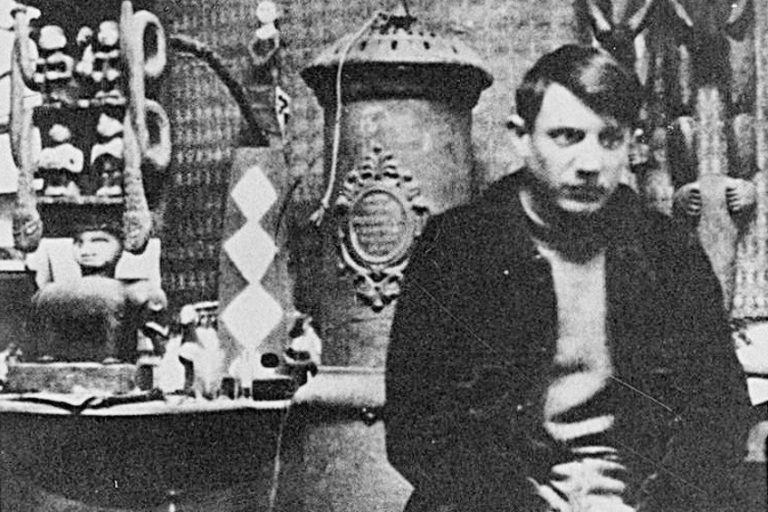


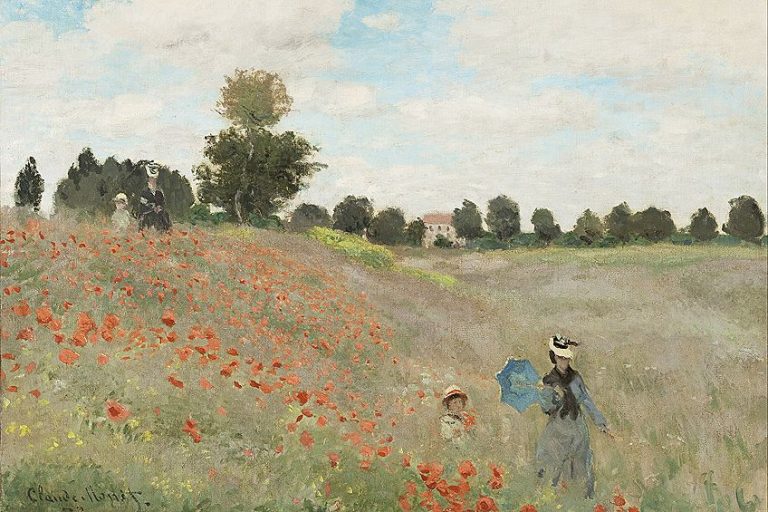
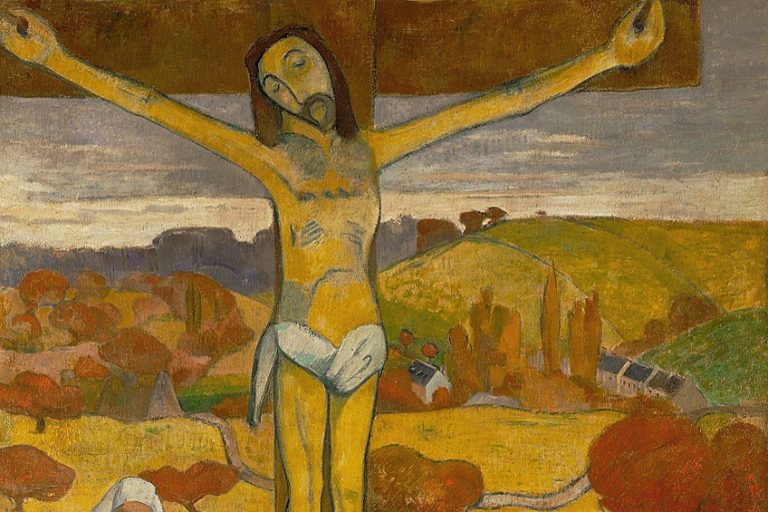



Very interesting collection of famous dog paintings – thank you!